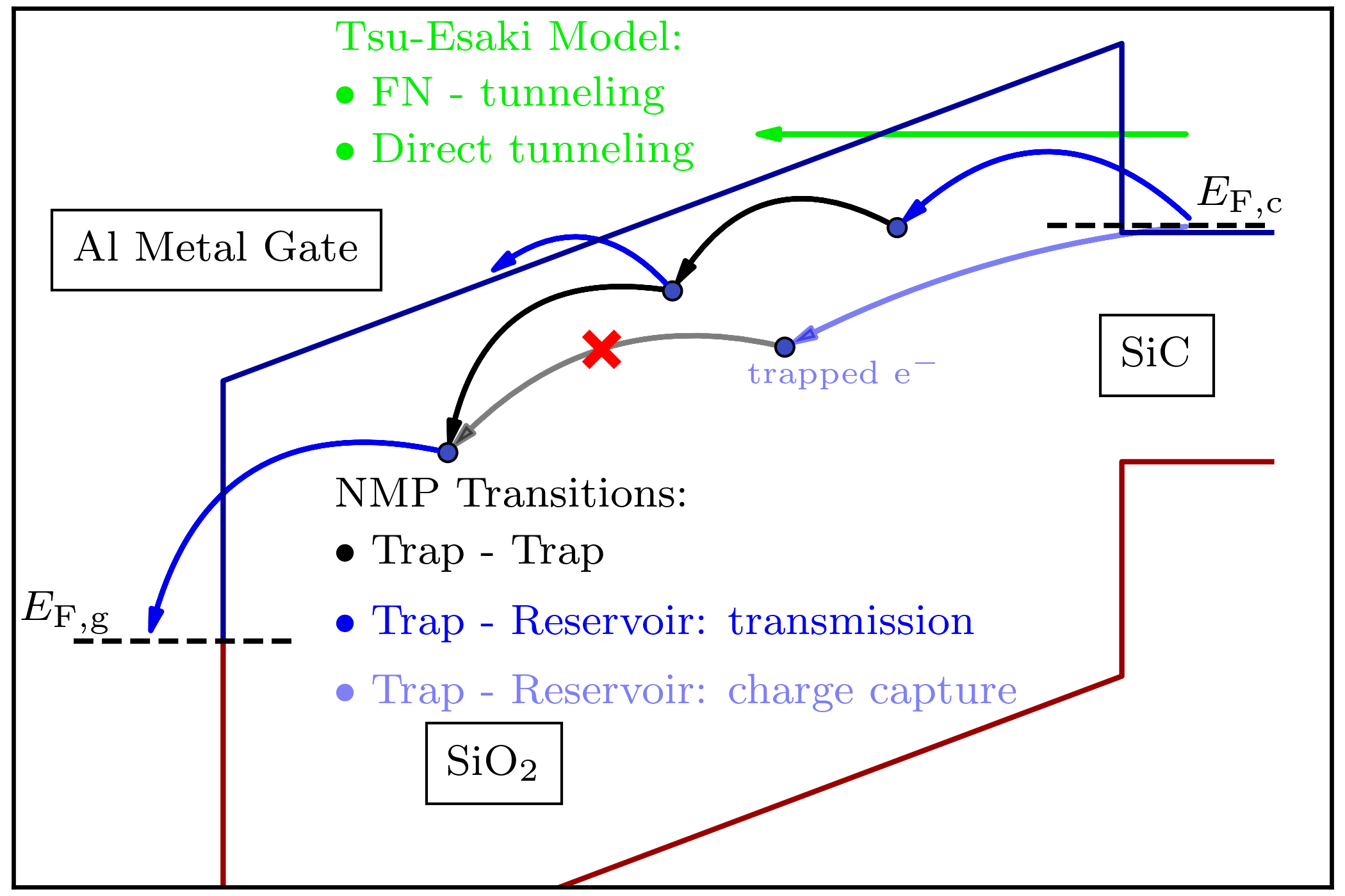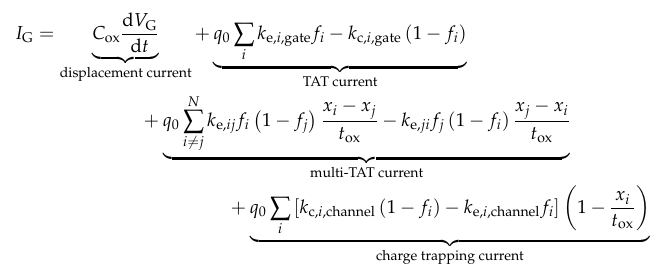 |
|
||||
BiographyChristian Schleich started his engineering career as a service engineer and technical support engineer at EVGroup, a semiconductor equipment supplier, directly after graduating from technical high school (HTL) in 2006. He studied electrical engineering at TU Wien, where he received his BSc degree in 2017 and his MSc degree in 2019. He joined the Institute for Microelectronics in February 2019 and is currently working on his PhD on the characterization and modeling of defects in SiC MOS transistors. |
|||||
Modeling of TAT Currents via Multiple NMP Transitions
Gate leakage currents lead to enhanced power loss during both off-state and on-state MOSFET operation. Also, large initial leakage currents can accelerate the dielectric degradation in thick insulators as used, for example, in power devices or between supply-interline layers at the back-end-of-line of device fabrication.
The minimization of these leakage mechanisms is fundamentally limited by the energetic barrier of the dielectric at medium and large electric fields, at which charge carriers can eventually tunnel through the insulator. This leakage contribution can be readily computed by a simple Tsu-Esaki model, with a WKB approximation at its core. However, in real devices with a large number of prevalent point defects, trap-assisted-tunneling is the dominating leakage mechanism at low to medium field strength, c.f. Fig. 1. In our newly proposed model, the gate current that results from the trap-assisted charge hopping mechanism is calculated using a modified Ramo-Shockley theorem, and is split in several contributions (see Figures).
All tunneling rates between the gate electrode (or channel) and a defect, as well as between the defects, are calculated by non-radiative multiphonon (NMP) charge transitions, as the mechanism is strongly temperature dependent. The reaction kinetics for a defect-to-defect charge transfer differs from those of a carrier reservoir-to-defect transfer, as in the former case both defects will undergo a structural relaxation and exchange energy with the energy reservoir (heat bath). However, these configuration coordinate diagrams can be readily converted into each other, which is valid below a certain defect density, therefore requiring only one physical defect parameter set. Within this work, this model has been implemented to extend our reliability simulation framework, Comphy. It has then been used to investigate the impact of the multi-TAT term in detail, as this contribution has been neglected in most of the previously available models. It has been found that the importance of multi-TAT, while limited to a rather small defect parameter space with low relaxation energies and large defect densities, cannot be neglected in general. The TAT modeling efforts in Comphy have been designed to capture the most important physical aspects of the tunneling features while maintaining highest computational efficiency, to allow the comparison of many different material combinations and process splits. The newly proposed model has further been evaluated against measurement data containing TAT features available in literature.

Fig. 1: Different NMP transitions that can be observed as leakage currents in MOS structure are shown together with band-to-band tunneling through a barrier as can be calculated by the Tsu-Esaki model.

Fig. 2: Equation 1: Gate current contributions


